Our latest wine cellar installed on the Y712 Yacht by Oceanco in the Netherlands. Providing optimal storage for 600 bottles in state of the art acrylic, bronze and Oak racking.
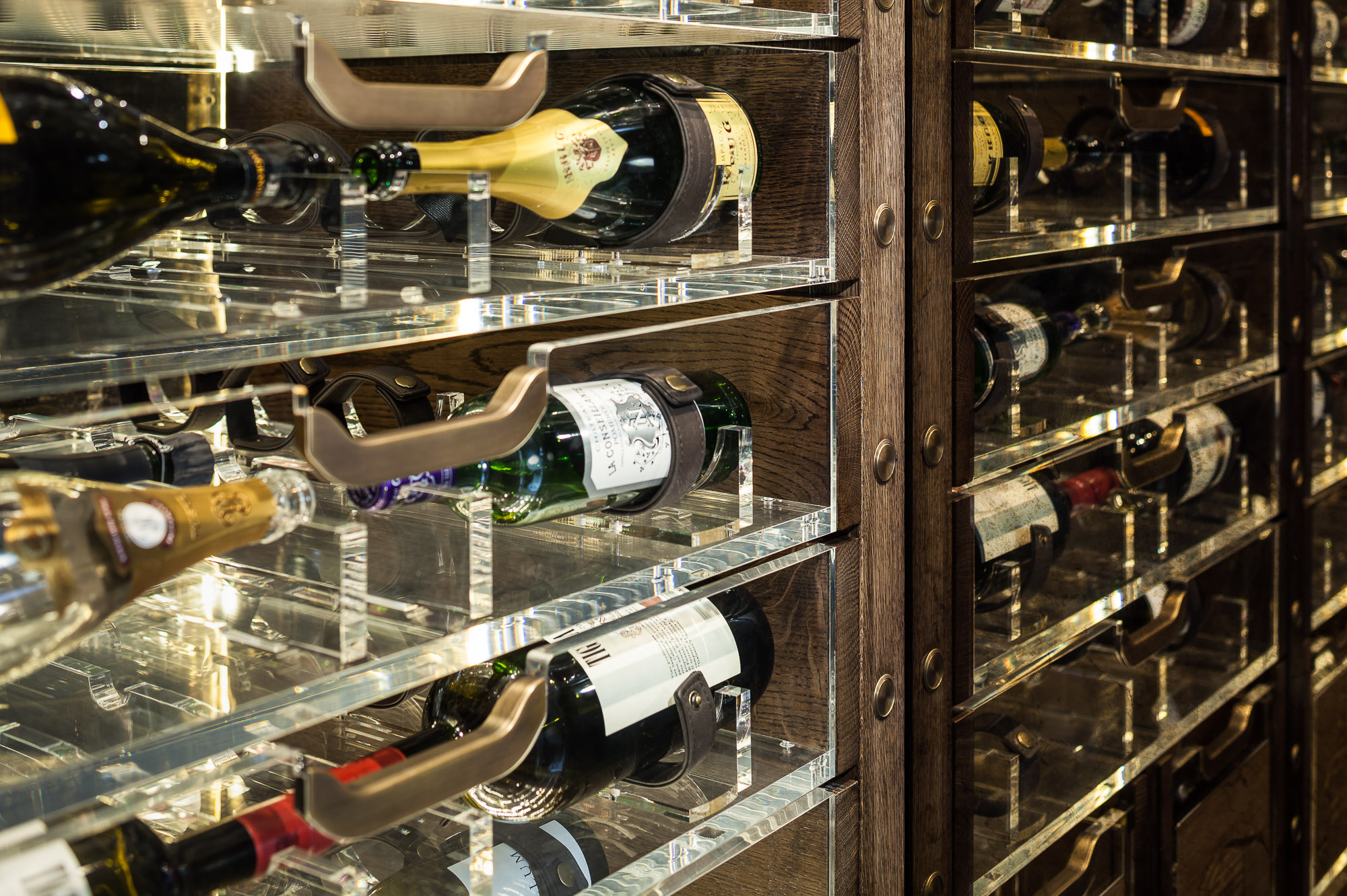
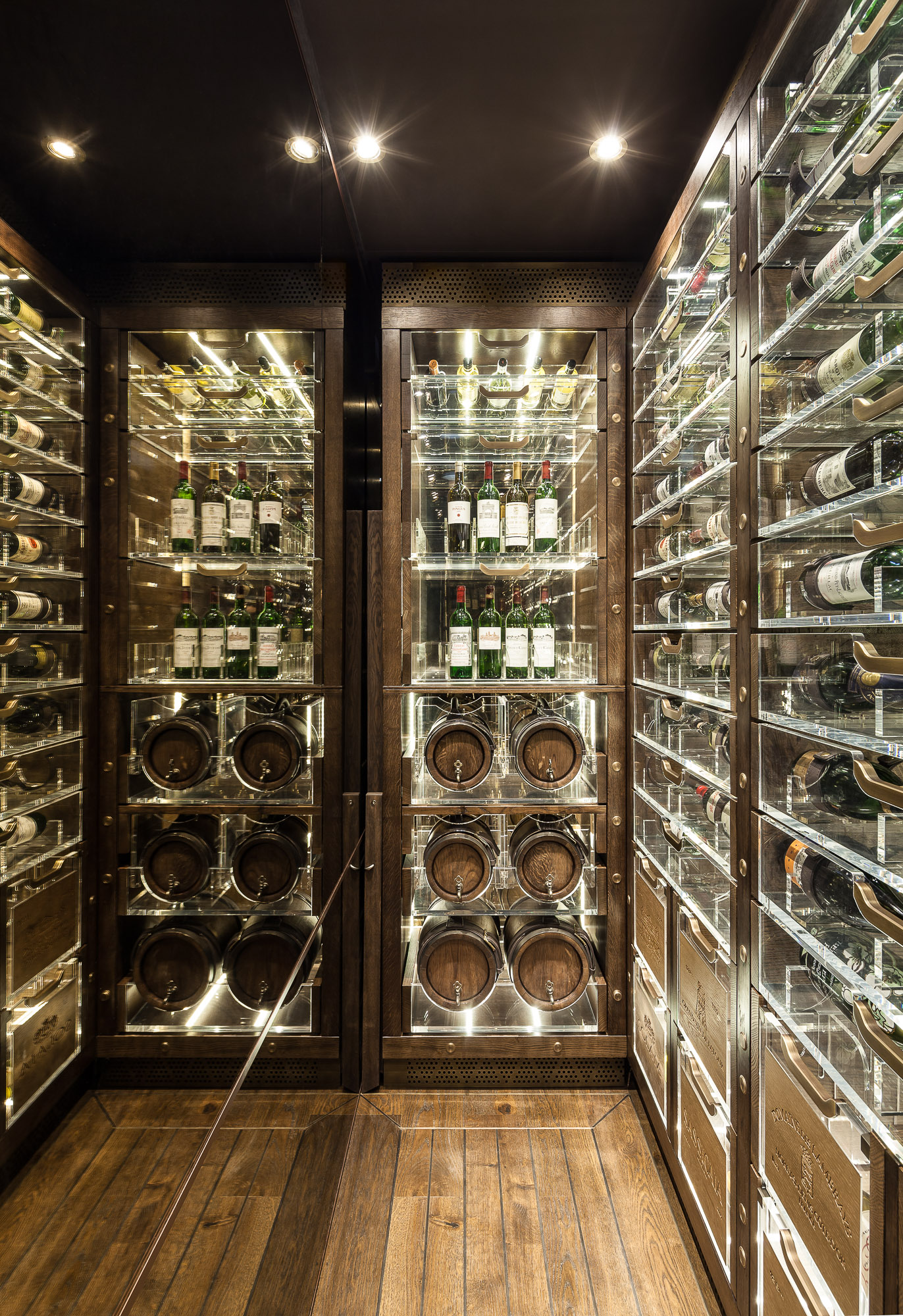
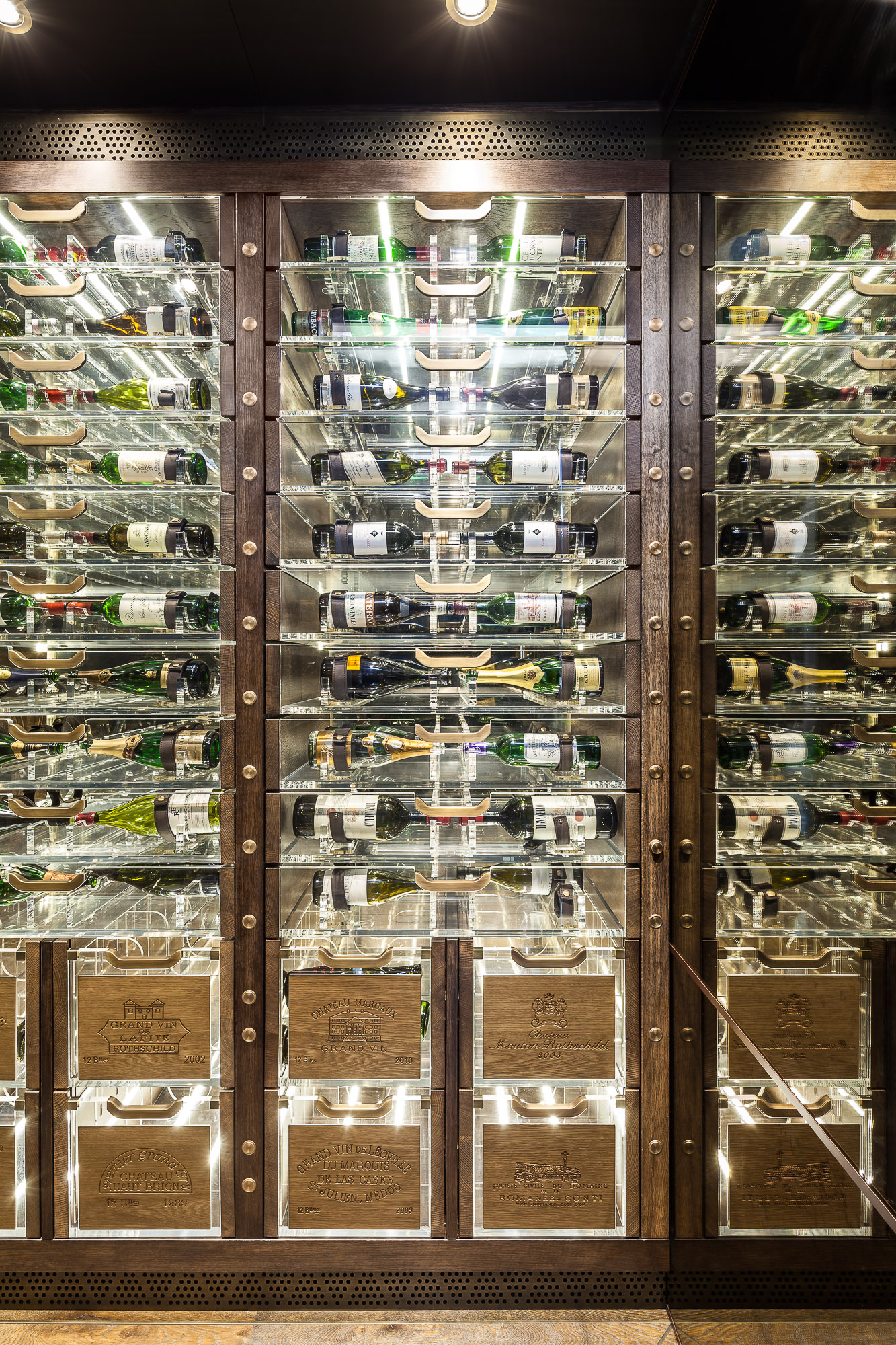
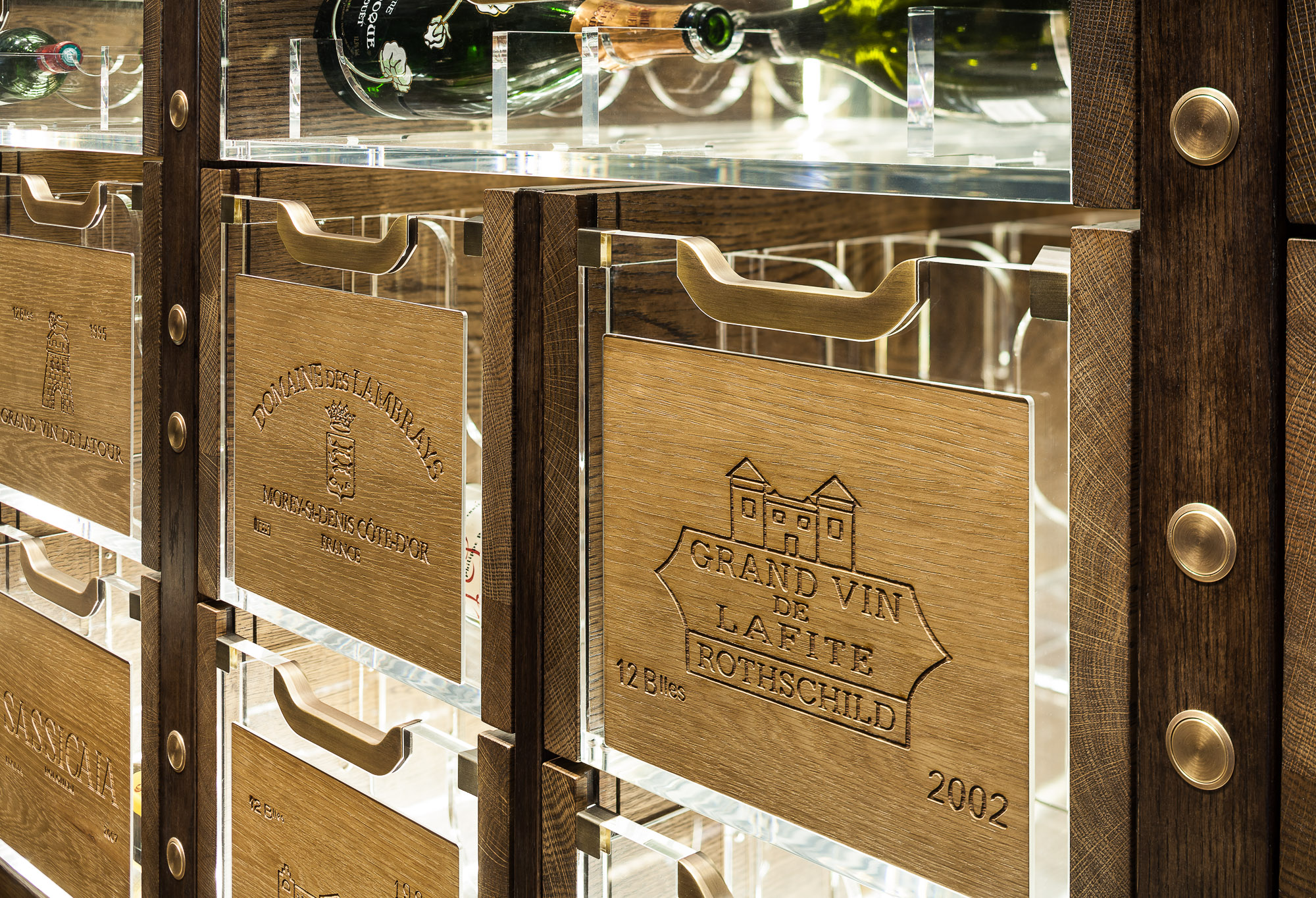
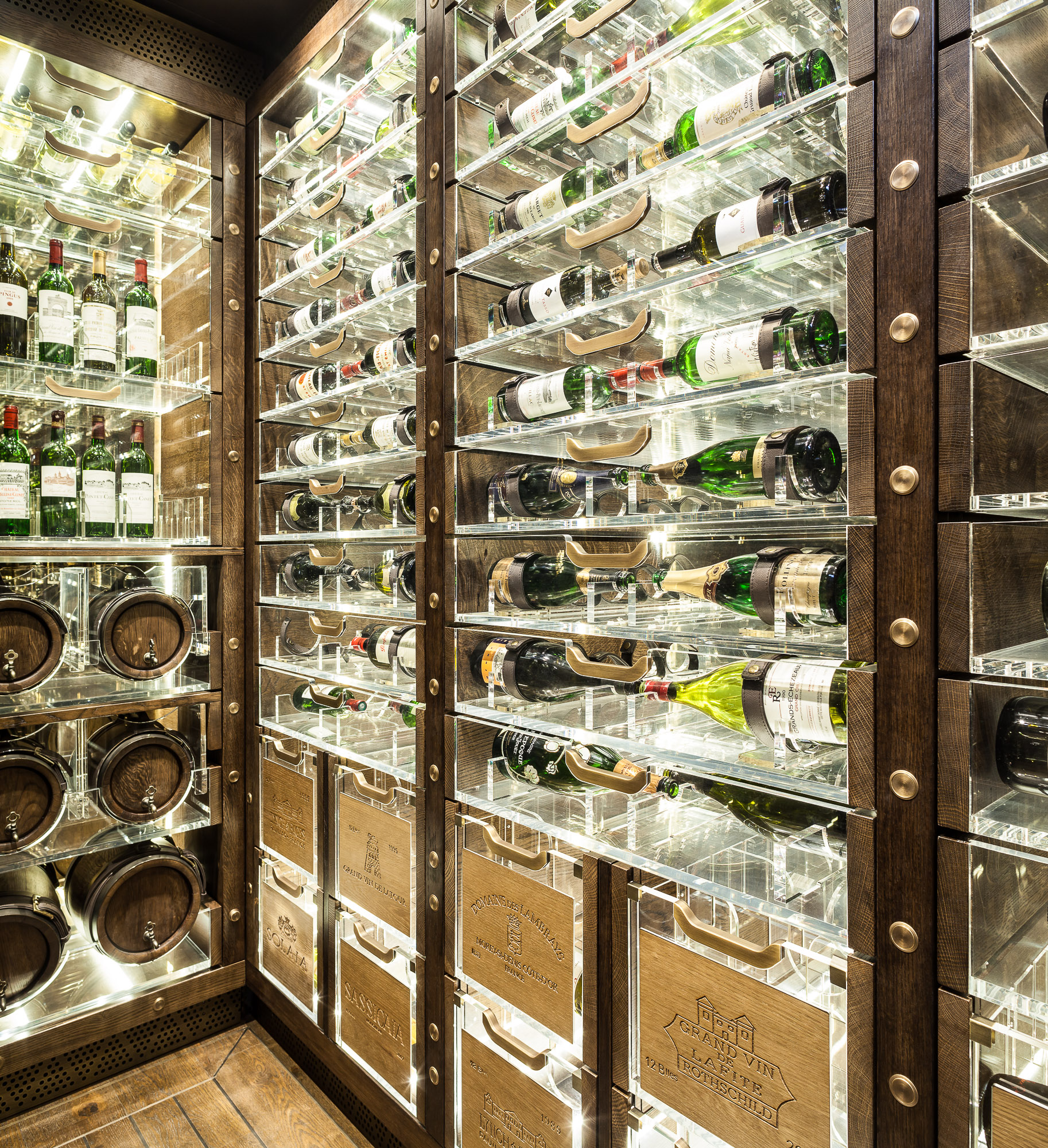
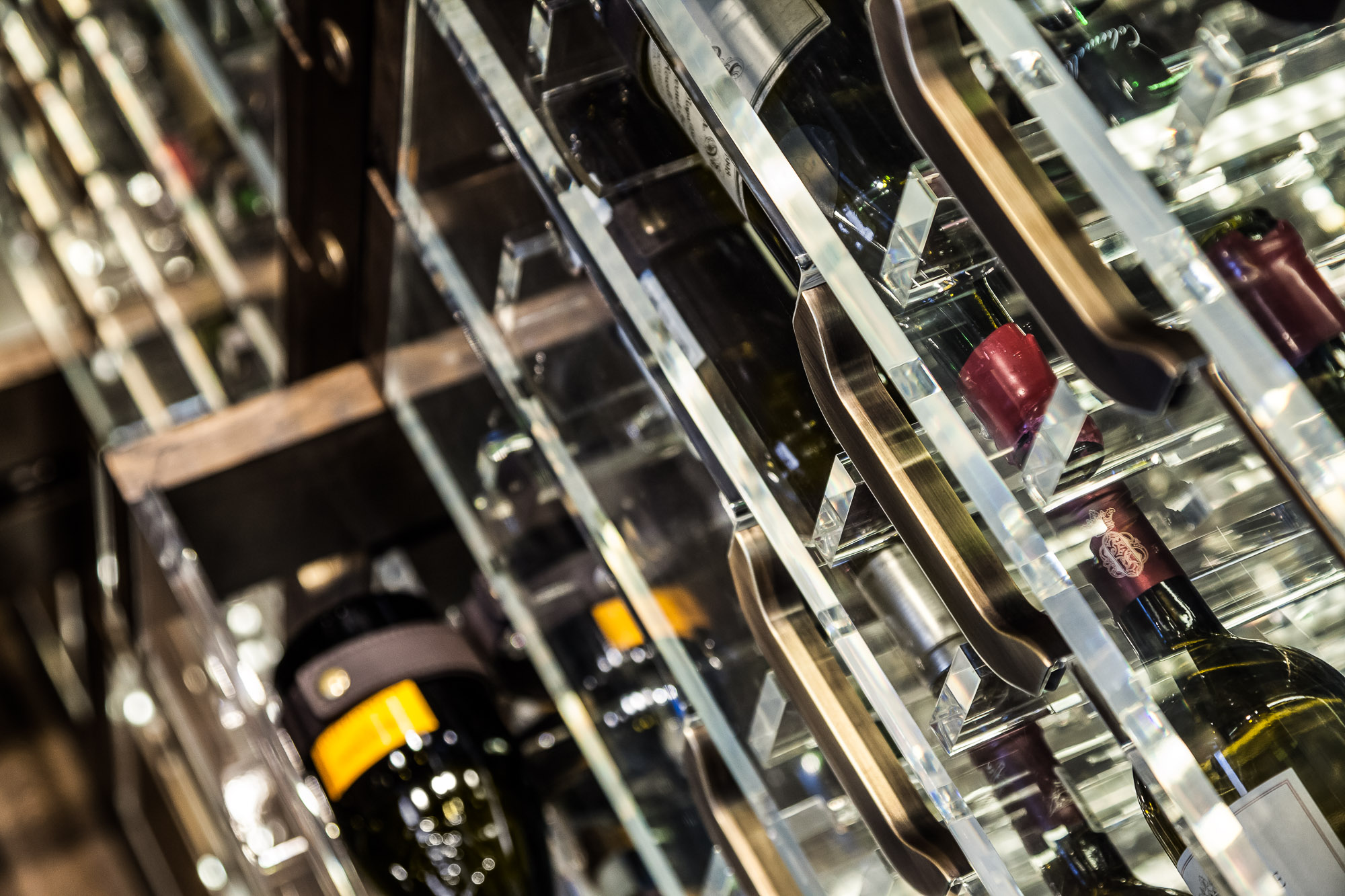
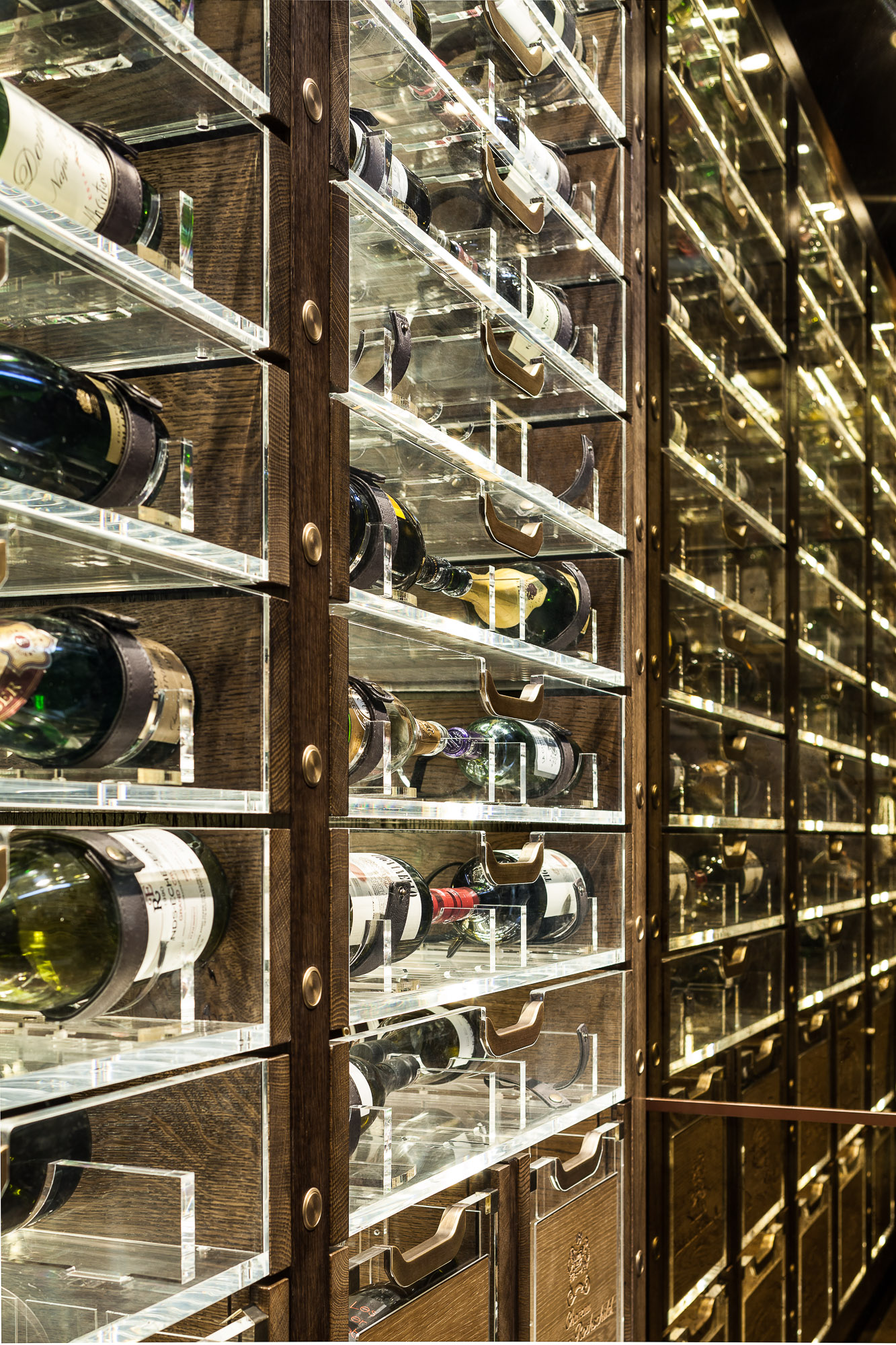
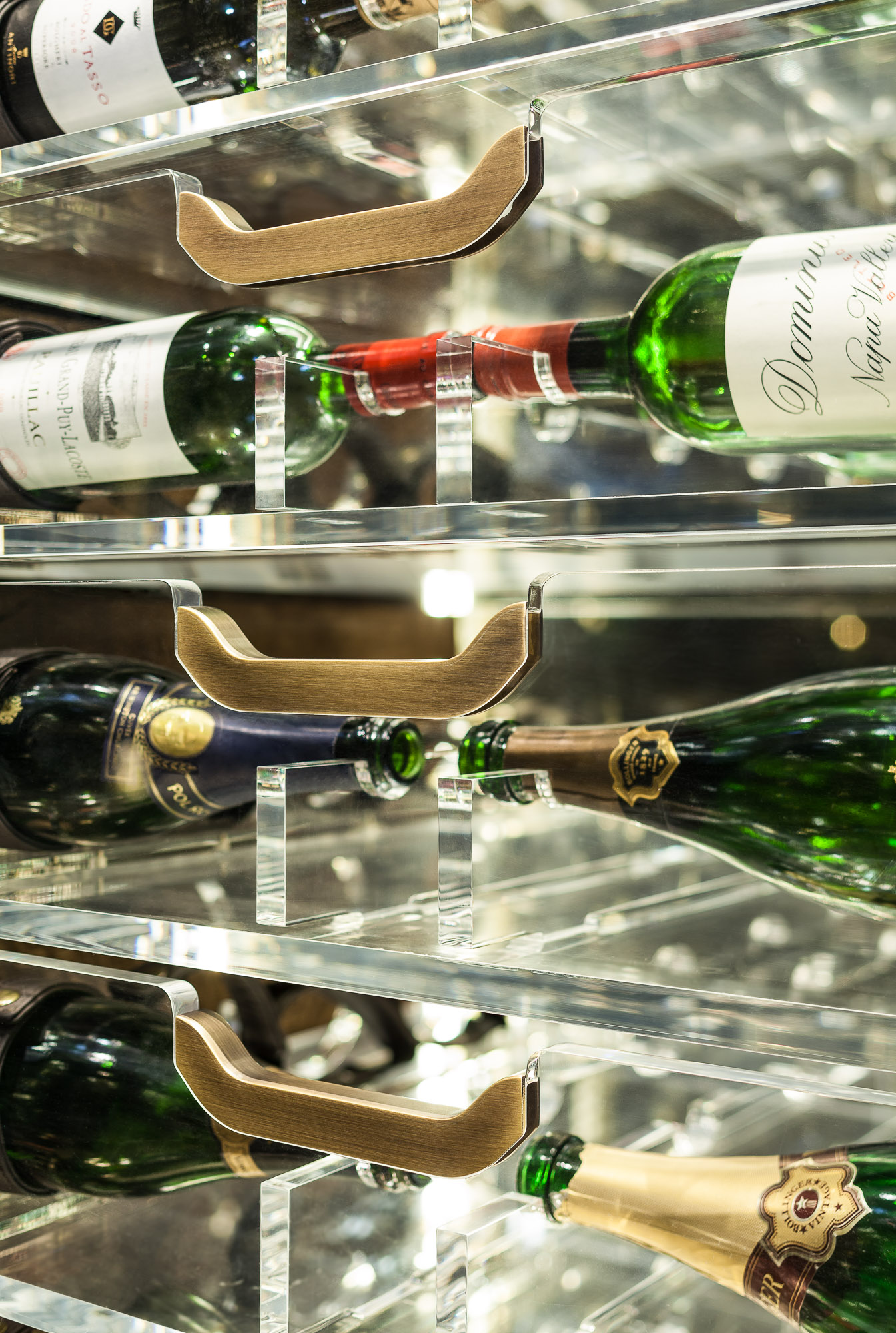

Pinot Noir.
Site: at the southern end of the Beaune appellation, next to Pommard. The Drouhin vineyard is at mid-slope, on a mild incline with an east/south-east exposure. It is the largest parcel of the Clos des Mouches (14 hectares - 35 acres), one half planted with chardonnay, the other half with pinot noir.
History & tradition: the name "mouches" means flies. There were once bee-hives in this sun-drenched "clos" (vineyard enclosure); the bees in the local dialect were called "mouches à miel" (honey flies), hence the name Clos des Mouches. It is one of the first vineyards acquired by Maurice Drouhin (the founder's son) in the 1920's. With great determination, he bought 41 different parcels from 8 proprietors. It is planted equally in red and white grapes and both wines have achieved mythical status for the House of Joseph Drouhin.
Soil: clay and limestone. Rocky soil in the upper part of the vineyard. At the center, the soil is limestone and marl. This light composition is responsible for the great finesse of the wine.
Domaine area: 6.75 ha. (16.875 acres).
Average age of the vines: 39 years.
Biological cultivation since 1990; biodynamic cultivation a few years later.
Vine stocks: "sélection massale" (propagation of new vine stocks from a number of selected vines) done at the Drouhin nursery; also clones of recognized quality.
Soil maintenance: compost of manure and white wood, sometimes guano (seabird manure used as fertilizer). Soil is ploughed either by tractor or by horse to manage spreading of weeds
Treatment: only authorized products for biological cultivation are used: infusions and macerations of plant materials, sulfur and copper, powdered rock. Natural predators are not eliminated.
Plantation density: from 10,000 to 12,500 stocks/ha in order to extract all possible nuances from the terroir and limit the production of each vine stock.
Pruning: Guyot.
Yield: we aim to keep our yields low, more in line with the previous regulation, around 20% less than allowed by the current law.
"An exceptional wine. Beautiful, deep-red ruby colour, with the bright sheen of great Burgundies. Intense and fresh nose for the young wines. Primary notes of red fruit dominate, such as Morello cherry ("griotte", or wild cherry), raspberry, blackberry. There are hints of complexity with smoky flavours evolving towards liquorice. When the wine is maturing, aromas of pepper, tobacco, humus and undergrowth appear. When drinking the wine, the first impression is always clear-cut and the texture fleshy. The body is firm without being rough, well meshed without being heavy. There is great freshness in the younger wines. With age, the wine gets rounder. It takes on "gras" (velvety texture) and a more precise architecture, supported by silky tannins. It is lively and refined at the same time. There remains a final and most pleasing sensation of harmony, fullness and delicate tannins, as the wine lingers on the palate".
Wine by Design provided optimal conditioning and racking for 35,000 bottles in the Pall Mall Wine cellars, we also designed and built the wine library and wine wall in the members lounge. The wine storage in the members lounge is unique as it keeps all the wine (Red, White & Champagne) at serving temperature.

They say that great Bordeaux vintages end in a “9”. Looking back over the 20th century that may well be true. 67 Pall Mall hosted a tasting which included the 1999 and 2009 courtesy of the Château Léoville Las-Cases, to many, a First Growth in all but name. We had the opportunity to contrast each wine with proprietor Jean-Hubert Delon’s other Saint Julien estate, Clos du Marquis from the same vintages. One of the most underrated wines on the Left Bank. Pierre Graffeuille, who works alongside Jean-Hubert, was on on hand to offer his own insights, plus Bordeaux reviewer Neal Martin, who has been visiting the estate for almost 20 years.
Mouth-blown and formed by hand in England, without the use of moulds. Due to the extensive work required to make each piece, these luxury decanters are only produced in limited runs of 20, no more than four times per year. Each piece is accompanied by a certificate, indicating its unique production number.
Why 13° 60° 104°? The three possible angles at which the decanter can sit.
At 13 degrees, the decanter begins the evening sober. As drinking progresses, at 60 degrees the decanter is a little tipsy. By the end of the evening, it sits at a drunken 104 degrees.

Chateau L’Eglise Clinet, slowly but surely keeps getting better and better. Today, it is one of the true stars of Pomerol! The wine of L’Eglise Clinet is concentrated, full bodied, opulent and rich. Everything is in harmony and balance. This special Bordeaux wine offers a purity of fruit, exotic spice components, freshness and sensuous textures not found in most wines.

Denis Durantou took over Chateau L’Eglise Clinet in 1983. In his early years, it was not easy managing the estate. Denis Durantou had to renovate the cellars as there was no floor, only dirt. The vats were old, unclean and lacked temperature control. He quickly added stainless steel, temperature controlled vats, relined the cement tanks with epoxy and increased the amount of new, French oak used to age the wine of Chateau L’Eglise Clinet. Improvements in the wine were easy to see. After producing a moderate wine in 1982, which was a shame as 1982 continues to be one of the all time great vintages for Pomerol, things started to turn around. It took just 2 years for Denis Durantou to start Chateau L’Eglise Clinet on the road to legendary status. 1985 Chateau L’Eglise Clinet was his first true success! Year after year, the wines of Chateau L’Eglise Clinet continue improving. The level of quality really kicked in starting with the 1998 vintage. There was no looking back after that.
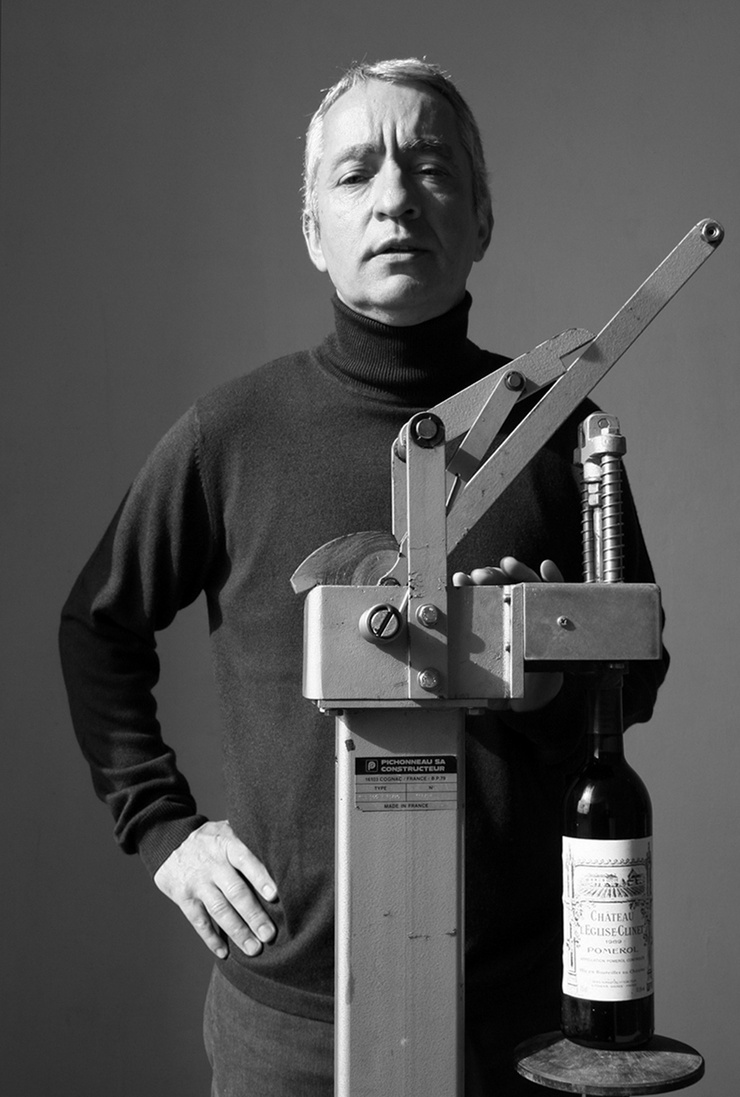
Neal's writing style makes this book an easy read. It gives you all the detail and tasting notes you could wish for covering the most unique appellation in Bordeaux. With maps of the properties drawn by the proprietors themselves, it is fair to say that this writing style is the future of wine books to come.
There are few Californian wines that could hold a torch to the great producers of Bordeaux, Ridge Monte Bello is one wine that not only equals the best Bordeaux châteaux, but surpasses them.
The Monte Bello vineyard is located in the northern reaches of the Santa Cruz Mountains at an elevation of between 1,300ft and 2,660ft with south/south-easterly exposure, on decomposing Franciscan rock with clay on a substrata of fissured limestone (common in France, rare in California.) There are 66.4 acres of Cabernet Sauvignon between 10- and 52-years old, 12.8-acres of Merlot between 6- and 33-years old, 2.2 acres of Petit Verdot between 10- and 13-years old and just 1.3-acres of 31-year old Cabernet Franc. Vines are head-trained and cane-pruned on trellis with no irrigation save for the fledgling vines.
If you are a wine fanatic and have yet to try your wine in a Zalto glass - now is the time!!
Technical perfection is the basic principle of the Zalto Glass Manufactury. Zalto Glasses have always been produced following a tradition of using only the most highly skilled glass-blowers working with a selection of the best raw materials. This tradition, and the resulting fineness of each glass, echoes the delicate virtuosity of the great Venetian glass artists of the Renaissance.
Most of the year I write about what to serve and drink but during this festive season I’d like to focus on what to serve and drink wine from……. Riedel no longer has the wine glass market to himself and an increasing proportion of the newer wine glasses have an angle in them rather than being gently bulbous – presumably to maximise the surface area of an ideal serving. The glasses that have most impressed me recently, from Zalto, conform to this rather Scandinavian shape and are the thinnest and most delicate I have come across, yet seem springy and almost elastic in the hand. The Zaltos were originally Venetian but the glasses are made in northern Austria and over the border in the Czech Republic. Best of all, the manufacturers say they are best washed in a regular dishwasher. At £26 for one of the “Universal” model...they are not cheap but they are cheaper than many of Riedel’s top models and would give any serious wine lover a real thrill over the closeness of contact they offer……. Jancis Robinson MW OBE - www.JancisRobinson.com
If any wine exemplifies the California Cult wine phenomena, it’s Screaming Eagle , which made its auspicious debut with their 1992 vintage. Within two short years, the wine quickly shot to the top of the hot, must have collectible charts. In fact, the current price for the 1992 Screaming Eagle has soared to over $8,000 That’s per bottle, not per case!
The 1992 Screaming Eagle Cabernet Sauvignon is exceptionally impressive. The wine's opaque purple color is followed by a sensational nose of jammy blackcurrants and subtle toasty oak. As stunning as the aromatics are, the wine reveals even greater richness and intensity on the palate, offering up layers of stunningly proportioned, ripe, intense fruit, full body, great purity, and an inner-core of sweet, creamy, highly extracted blackcurrant/cassis fruit. The tannin is nearly concealed behind the massive extract and richness. All the component parts are brilliantly focused and in balance. The finish is awesome! This is a spectacular debut release that should age effortlessly for 20 years. - 99 RP -
One of Philippe's goals is to express the terroir effect on wine, Pacalet’s Burgundies are quite distinctive, with lovely purity and elegance, and thrilling aromatics. These aren’t wines that grab you by virtue of their size, but instead they seduce with freshness and elegance. Pacalet is clearly a master of élevage.

All vineyards are farmed by Pacalet himself and hand harvested. The grapes are then sorted in the vineyard before being brought to the winery in Beaune where they are fermented, whole cluster, in large, open top vats. He carries out a long maceration and during this time the cap is punched down twice a day and the grapes are also foot-stomped. Afterwards, the resulting juice is drained from the bottom of the vat (which makes up ¾ of the eventual wine) and the grapes are moved to a press. The press wine (1/4 of the blend) is then added to the free run juice and both undergo malolactic fermentation in barrel using the native yeasts only. No sulfur is used during the vinification process – a small amount may or may not be added at bottling, depending on the vintage..
2008 Philippe Pacalet Charmes Chambertin
The Pacalet 2008 Charmes-Chambertin (in fact largely from Mazoyeres) offers a high-toned, suggestively sweet nose of candied cherry, almond and pistachio extracts, along with heady, heliotrope and gardenia perfume. As this opens, a Chartreuse-like sense of high-toned herbal essences emerges as well, and on a delicate, silken-textured palate, savory suggestions of browned butter and caramel complement the wine’s bright fruit and alluring florality. I find less length and certainly less sense of minerality than in the corresponding Lavaux, but this had been bottled only a week before I tasted it. It will prove worth following for the better part of a decade. DS - 92
Angelo Gaja is one of Italy’s most renowned, most dynamic wine personalities and his impact on viticulture there in the last 30 years cannot be overstated. Some credit him with putting Italy at the forefront of today’s wine making nations.

Angelo Gaja introduced several practices to Piedmont, starting in 1961 by experimenting with green harvesting and single vineyard production, which begin with Sori San Lorenzo in 1967, Sori Tildin in 1970 and Costa Russi in 1978. He introduced malocatic fermentation to Piedmont and from 1975-1976 started using French barriques, although by modernists standards he is still reserved in their use. Gaja transported thermo-controllable fermentation equipment and eventually used French grape varieties.
Gaja like most innovators also brought its share of the polemic, when he intentionally declassified his DOCG Barbaresco and Barolo’s, citing his reason as the desire to be able to introduce small amounts of Barbera to some of his blends: in reality Gaja can do and does whatever he likes, as his wines are some of the most revered in the world. The following wines are made in minuscule quantities and are all 95% Nebbiolo and 5% Barbera, spending 12 months in barriques and again 12 months in large oak casks, classified as Langhe Nebbiolo DOC, due to the use of Barbera.
Is this the ultimate SA "cult wine"? many are starting to think so

Mvemve Raats is a joint venture inaugurated in 2004 between Bruwer Raats and Mzokhona Mvemve. I must confess that adrenalin began rushing as I tasted two vintages of their stunning Bordeaux blend: De Compostella. I began to wonder why I spent two weeks down in Bordeaux assessing self-aggrandizing Cabernets?
The 2011 MR de Compostella comes from separately vinified parcels that are assessed blind after 12 months, the highest rated barrels spending another 12 months in wood, a tripartite mixture of new, one and two-year-old oak. It has a seductive bouquet that is beautifully defined: blackberry, raspberry and blueberry fruit wrapped up in judicious new oak and hints of cedar and sandalwood that come through with time. The palate is medium-bodied with crisp red berries, soy and hints of spice. It is perfectly controlled with more finesse on the finish than the twenty odd South African samples I tasted before this. To sum up this wine in two words: world class. Ignore at your own risk. (Neal Martin - 95)
Wine by design - distributors of Wine Guardian products in the UK
Whether for your home, restaurant or storage facility, a versatile wine cooling system that provides commercial-grade temperature and humidity control is essential. That’s where Wine Guardian comes in. As stylish as they are functional, our wine cellar temperature and humidity control systems set the standard for performance while offering easy installation in any wine room.
Wine Guardian systems are available in a number of through-the-wall, ducted and ducted split models that are quiet and energy efficient, made of commercial-gradecomponents and equipped with more unique features and options than any other system, from any other manufacturer. Wine Guardian can also outfit your cellar with uniquely designed, integrated or freestanding humidifiers as well as remote sensing and remote monitoring systems.
Looking for something unique, The wines of Randy Dunn really need no introduction in the US. First with Caymus Vineyards, where Randy was the winemaker from 1975 through 1985, and then with his eponymous Dunn label, whose first release was a 1979 Cabernet from Howell Mountain fruit, Dunn’s wines have made people take notice. Indeed, much of Caymus’s fame was built on the wines of those vintages, and while the Dunn wines are cut from a different cloth, they have won admirers for years.
Dunn has been on a crusade to reverse the upward spiral of alcohol in Cabernet, a trend he sees as not only destroying the style of wine on which Napa has made its reputation but also neutralizing any sense of place.
He is so opposed to making wine above 14 percent alcohol that he openly resorts to a controversial method known as reverse osmosis, which removes some of his wine's alcohol.
With Napa's price ceiling now hitting $750 per bottle, it's harder to categorize Dunn's wines. Are they great bargain cult bottles, or holdovers from a less prestigious era?
"I've been in many conversations with people that have been selling their wines for $150 a bottle for 15 years, and I was at $65 or something. They go, 'What are you doing? You're making us look like fools,' " he says. "And I said, 'You know, I'm quite profitable at this level.' Here's a concept called greed."
Henri Jayer’s Richebourg is the most expensive wine in the world. This red Burgundy, which is no longer in production, has the highest average price of all wines listed on Wine-Searcher. It averages out at $14,395 per bottle, a figure calculated across at least three vintages.
Born in 1922, the late Henri Jayer began to lease vines "en metayage" in Vosne-Romanée's Richebourg vineyard from the Noirot-Camuzet family. This sharecropping system meant that Jayer tended the vines and gave half of the fruit harvested back to the owners as payment.
The lease continued until 1987, which was the last year that Henri Jayer made Richebourg under his own label. The rarity of the product is certainly a factor in the stratospheric price.
In the intervening period, Jayer had purchased land around Vosne Romanée, including a vegetable patch which at that time was planted with Jerusalem artichokes. This parcel of land had formerly been the Cros Parantoux vineyard and the artichokes soon made way for vines. The plot was restored to its pre-phylloxera glory and became a premier cru vineyard in 1953. Today, its wines sell at an average of $5,436 per bottle – making it the world’s third most expensive wine, according to the Wine-Searcher database.
Jayer did not bottle all of his own wines until 1978, which means that wine lovers can find négociant bottlings of some vintages. This extraordinary winemaker retired in 1996, when his nephew, Emmanuel Rouget, took control of the domaine. However, Jayer continued to make wine for Rouget until 2001. He died five years later, aged 84. His wines continue to age gracefully.